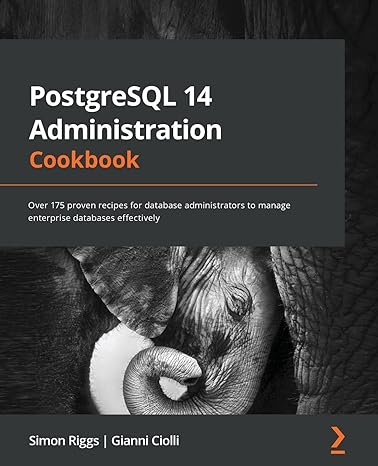Question
When mining for association rules, to generate three-item sets efficiently, one uses Question 19 options: two-item sets and one-item sets alone two-item sets and one-item
When mining for association rules, to generate three-item sets efficiently, one uses
Question 19 options:
| two-item sets and one-item sets alone | |
| two-item sets and one-item sets and then the dataset to confirm support | |
| two-item sets alone | |
| two-item sets to get candidates and the dataset to confirm support | |
| the dataset alone |
Question 20 (1 point)
Consider only Body temp, Give birth, Aquatic attributes in Table 1, and assume you are looking for association rules with minimum support 3. Which of the following association rules have confidence 100%?
Table 1: Vertebrate Dataset (modified from Introduction to Data Mining by Tan et al.)
| Name | Body temp | Give birth | Aquatic | Class |
| human | warm | yes | no | mammal |
| echidna | warm | no | no | mammal |
| salmon | cold | no | yes | fish |
| whale | warm | yes | yes | mammal |
| eel | cold | no | yes | fish |
| bat | warm | yes | no | mammal |
| shark | cold | yes | yes | fish |
| cat | warm | yes | no | mammal |
Question 20 options:
| If Aquatic = no, then Body temp = warm and Give birth = yes | |
| If Body temp = warm and Give birth = yes, then Aquatic = no | |
| If Give birth = yes, then Aquatic = no and Body temp = warm | |
| If Give birth = yes and Aquatic = no, then Body temp = warm | |
| If Body temp = warm, then Give birth = yes and Aquatic = no |
Question 21 (1 point)
If we use the association rule mining algorithm on the dataset in Table 1, without considering the attribute Name, which of the following is a frequent two-item set (minimum support is 4)?
Table 1: Vertebrate Dataset (modified from Introduction to Data Mining by Tan et al.)
| Name | Body temp | Give birth | Aquatic | Class |
| human | warm | yes | no | mammal |
| echidna | warm | no | no | mammal |
| salmon | cold | no | yes | fish |
| whale | warm | yes | yes | mammal |
| eel | cold | no | yes | fish |
| bat | warm | yes | no | mammal |
| shark | cold | yes | yes | fish |
| cat | warm | yes | no | mammal |
Question 21 options:
| Body temp = warm, Give birth = yes | |
| Body temp = warm, Aquatic = no | |
| Body temp = warm, Class = mammal | |
| a, b | |
| a, b, c |
Question 22 (1 point)
In instance-based learning, when using a kD-tree to locate a nearest neighbour of a target instance, the nearest neighbour is
Question 22 options:
| at the root of the tree | |
| at an internal node | |
| at a leaf node | |
| possibly any one of the above | |
| none of the above |
(The following two questions are based on this figure)
When applying the instance-based learning algorithm, the kD-tree created for a dataset with 4 instances is shown below.
Question 23 (1 point)
Given a test instance (2, 5), which training instance is identified as the nearest neighbor?
Question 23 options:
| (2, 2) | |
| (3, 8) | |
| (6, 7) | |
| (7, 4) |
Question 24 (1 point)
In the previous question (given the test instance (2, 5)), which instance is first located as the potential nearest neighbor (when falling through the root to the leaf without tracing back)?
Question 24 options:
| (6, 7) | |
| (2, 2) | |
| (7, 4) | |
| (3, 8) |
Step by Step Solution
There are 3 Steps involved in it
Step: 1

Get Instant Access to Expert-Tailored Solutions
See step-by-step solutions with expert insights and AI powered tools for academic success
Step: 2

Step: 3

Ace Your Homework with AI
Get the answers you need in no time with our AI-driven, step-by-step assistance
Get Started


